Water Management
Water is a vital resource for both our operations and the planet, however itis becoming increasingly scarce. There is pressure for collective action, including involvement from the private sector, for efficient and improved the efficiency of water management.
The world's water consumption has increased by more than twice the rate of population growth over the last century, according to the United Nations Department of Economic and Social Affairs. The World Economic Forum's Global Risks Report lists the water crisis among the top ranked global risks. Water stress, droughts, floods, and a rise in sea levels are growing concerns in both the developed and developing world. The quality of the world's water is increasingly being degraded, threatening the health of people and ecosystems.
Water Management Policy
Indorama Ventures is committed to sustainable water management (including water withdrawal and discharge) through our Water Management Policy and Strategy. We comply with all applicable environmental laws, international standards, procedures and regulations in the countries we have operations and are proactive in demonstrating leadership through responsible water use in-line with our values.
In focusing on our business performance and objectives, we are committed to reducing our water intensity and minimizing water-related risks globally through our enterprise risk management in addition to creating sustainable business value.
Our water policy is a key component of the Indorama Ventures Group EHS policy which mandates environmental stewardship, environmental protection, and the efficient use of natural resources.
Improving our water management by:
- Ensuring compliance with environmental laws and regulations.
- Regular communication/coordination with local regulatory authorities/water suppliers to monitor water situations and mitigation measures.
- Responsible use of water including monitoring water consumption with a focus on reducing water intensity on a per ton production basis.
- Development of eco-friendly products through process innovation.
- Systematic tracking of water-related risks to the company and local communities.
- Quantifying and monitoring our water usage and discharge, as well as the potential effects on the surrounding environment, with the aim of improving performance.
- Regular increase of water recycles and reuses.
- Setting yearly targets for total fresh water consumption and water intensity.
- Monitoring total yearly operating costs for water at all sites including the impact of increases in fresh water costs worldwide to our operations.
- Managing and reducing effluents.
- Initiating incident investigations and corrective actions, and reporting on non-compliance.
Water Strategy and Management
Indorama Ventures has been focusing on responsible water use through our Sustainability Strategy and our Corporate Global Water Strategy, which mandates continuous improvements in water management through regular assessments and by further implementing technologies and processes to improve water use across all operations.
We comply with all applicable environmental laws, international standards, procedures, and regulations in the countries where we operate, and we continuously demonstrate proactive leadership in responsible water usage. Water Management is a key component of Indorama Ventures Group’s Environment, Health & Safety (EHS) policy, which mandates environmental stewardship, natural resource efficiency, and continuous process improvements. We have pledged to reduce our water intensity and minimize water-related risks globally through our enterprise risk management framework and collaborations with local and global stakeholders through various initiatives. More than 80% of overall operations have their own developed water management plan, with more than $14,000 in CAPEX in 2024. We are working to achieve zero liquid discharge at more of our sites while ensuring the most efficient water consumption by implementing the 3Rs (Reduce, Reuse, Recycle), as well as building wastewater treatment plants to increase water reuse and recycling, and reducing freshwater withdrawal across all our operations.
Indovinya, our subsidiary of Indorama Ventures, established Sustainability Strategy that, by 2025, 100% of the industrial plants located in water-stressed areas (RCP 8.5) classified as extremely high-stress will have an advanced water management plan. By 2030, the plants in water-stressed areas classified as high and medium-high stress will also have an advanced water management plan. It is important to mention that all action plans will be defined after the climate change risk study is delivered in 2024. Additionally, Indovinya joined the “Movimento +Água” promoted by the Global Compact in Brazil. This initiative aims to promote universal sanitation and water security, encouraging companies to collaborate for better control, transparency, and joint actions to advance SDG 6 (Clean water and sanitation). As part of this movement, Indovinya committed to supporting the collective goal of “Increasing water use efficiency by 25% in productive processes," ensuring lower withdrawals and sustainable water resources in nature, with 2010 as the baseline year.
intensity from 2020 levels
Actual:
2025 target:
Water Withdrawal
Water Recycled & Reused
Water returned to the source of extraction at similar or higher quality as raw water extracted
(cubic meter)
Note:
- Intensities are calculated based on overall production including inter-company sales.
- 2020 water has increased as Indorama Ventures acquired cracker plants, which resulted in higher water withdrawal.
- 2020 and 2021 environmental data has been restated using a more stringent definition and methodology.
- 2020 baseline was adjusted for an alignment.
Water Risk Management
We conduct a water sensitivity analysis using the AQUEDUCT Water Risk tool developed by the World Resources Institute (WRI) to identify the level of water stress at our operational sites. This analysis takes into account the total water available and total withdrawal in the area. Our study in 2024 indicates that currently 24% of our sites are located in extremely high water stress areas, while 19% are located in high water stress areas. With projected water stress in 2030, 16% of our sites are expected to fall under extremely high water stress areas while 11% are expected to be in high water stress areas. These results have been analyzed and discussed with the respective sites during risk assessment meetings and were shared with the committee to properly plan, and take the necessary corrective measures in regards to water use and conservation.
Water withdrawal by sources (%)
Total Water Withdrawal = 80,672,980 m3
Water Withdrawal in Extremely High and High Stress Area (%) - Region wise
Water Stress Assessment* : Current and Future
* Assessment conducted using the AQUEDUCT Water Risk Tool developed by WRI and the assessment is conducted to all 150 sites worldwide.
At our Indovinya segment, we have set a target for water scarcity area. Our Sustainability Strategy establishes that, by 2025, 100% of the industrial plants located in water-stressed areas (RCP 8.5) classified as extremely high will have an advanced water management plant, and that there will be a 10% reduction in water withdrawal intensity. By 2030, the plants in water-stressed areas classified as high and medium-high will also have an advanced water management plan, and withdrawal is to be reduced by 30%.
In 2024, Indorama Ventures Mobility Longlaville SAS implemented a sustainability-driven project by replacing its open cooling system for Dowtherm (HTM) pumps with a closed-loop network connected to the site’s cooling tower. Previously, tap water was consumed in a once-through cooling process and discharged after a single use. Through this system enhancement, water now circulates in a closed-loop system, eliminating unnecessary water loss. The initiative significantly reduces water consumption, saving approximately 20,105 m³ per year. It also enhances operational efficiency while contributing to environmental conservation and generating annual water cost savings of €12,500. This project reflects our commitment to sustainable operations through efficient water resource management and continuous process improvement.
IVL Dhunseri Polyester Company S.A.E. launched a water conservation initiative by enhancing its water treatment system through the installation of a third reverse osmosis unit (RO-3). This new system is designed to recover and recycle reject water from the existing RO-1 and RO-2 units, significantly reducing raw water intake. RO-3 is expected to be fully operational in 2025, with an anticipated annual raw water saving of 73,000 m³. As a result, the initiative is projected to deliver cost savings of approximately $104,000 per year through reduced water usage and wastewater disposal.
Wellman Neufchateau Recyclage S.A. launched the Wash Line Water Consumption Reduction project to address excessive water usage in LAC 2. The team improved water efficiency by implementing prewash water recycling and reintegrating it into the process, as well as optimizing the reuse of washing water. Additional actions included repairing leaks, minimizing autocleaning water usage, and enhancing process monitoring.
These improvements resulted in a 30% reduction in wash line water consumption, saving 34,503 m³ of water and €600,000 annually. The initiative significantly enhanced operational efficiency, supported sustainability goals, and contributed to long-term water conservation—without compromising production quality.
To address the significant risk of meteorological droughts and water shortage and scarcity, our Maua plant in Brazil of the Indovinya segment has proactively joined the Aquapolo project. Brazil is in the water stress area, that why he Aquapolo is the largest water reuse project in the Southern Hemisphere, developed through a partnership between GS Inima Industrial and Sabesp. This initiative is designed to provide a sustainable solution for industrial water needs by treating and recycling domestic wastewater.
Key Benefits and Actions:
- Ensuring Water Availability: Our plant can secure a reliable source of high-quality recycled water, ensuring continuous and stable operations.
- Maintaining Water Quality: The Aquapolo project treats domestic wastewater to meet stringent quality standards suitable for industrial use. This ensures that the water we use in our processes is of consistent and high quality.
- Reducing Conflicts Over Water Use: By utilizing recycled water, our plant reduces its reliance on freshwater sources. This alleviates pressure on local water supplies and helps prevent conflicts with other water users, including local communities and agricultural sectors.
- Sustainable Practices: Joining the Aquapolo project aligns with our commitment to sustainability. It demonstrates our proactive approach to environmental stewardship and our dedication to adopting innovative solutions to address climate-related challenges.
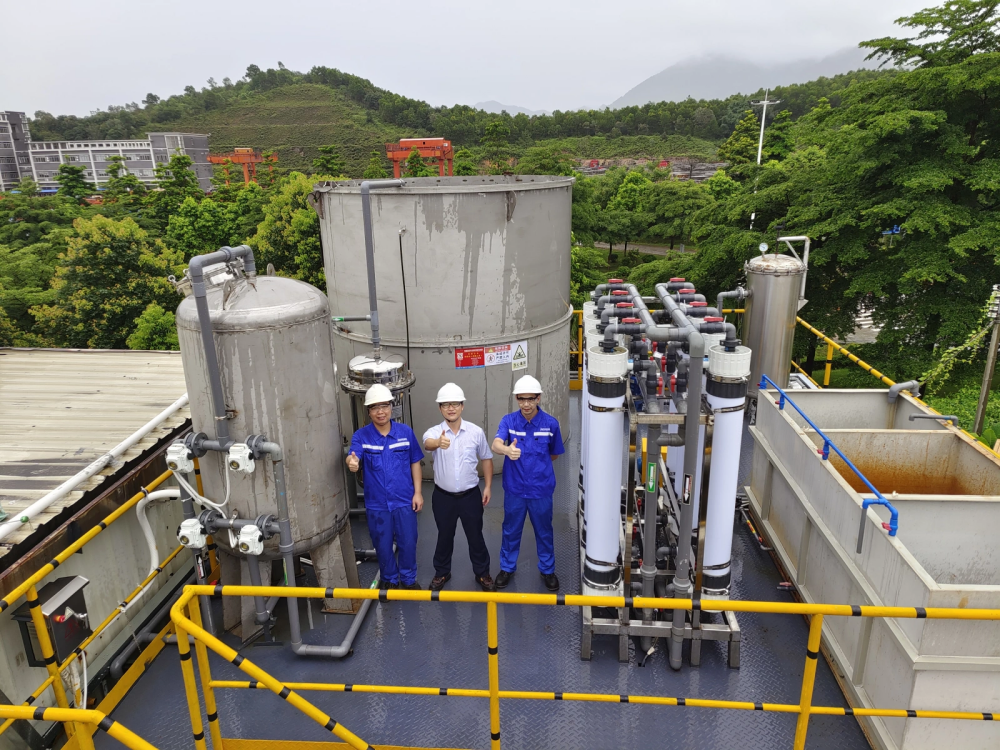
The Ultrafiltration Membrane System. This system reduces water consumption at the Green Hill site by approximately 100 tons per day (30% of total usage). The achievement of zero liquid discharge for both the Changsha and Green Hill sites signifies a major milestone in our sustainability and cost improvement journey.
Guangdong IVL PET Polymer Co., Ltd. successfully addressed capacity bottlenecks and waste issues within its Reverse Osmosis (RO) system, resulting in significant improvements. By increasing the RO capacity, the factory directly reduced the production of high-concentration water, which previously posed quality issues and generated substantial waste. Consequently, the factory’s water consumption decreased and it increased water reuse by 120,000 m3 per year. This achievement not only conserves valuable water resources but also contributes to overall environmental sustainability. By optimizing water usage, enhancing production water quality, and minimizing waste, We have made significant strides towards sustainable manufacturing practices. Additionally, this system not only decreased water consumption but also enabled water reuse.
At Indorama Ventures Hygiene Covington, USA we have transitioned from using city water to plant chilled water in a closed-loop system to cool the crimper rolls. Previously, an open-loop system was in place, resulting in significant water waste of approximately 7.5 million gallons per year. With the implementation of the closed-loop system by investment $ 79,977, we anticipate an annual water reduction of 15,336 m3 , resulting in savings of $ 85,000 per year. This initiative not only brings substantial financial savings but also delivers significant environmental benefits by drastically reducing overall site wastewater discharge volumes, reflecting our commitment to sustainable practices and demonstrating proactive efforts to minimize water consumption and site wastewater discharge volumes. Additionally, the site has achieved a water intensity reduction of 13%
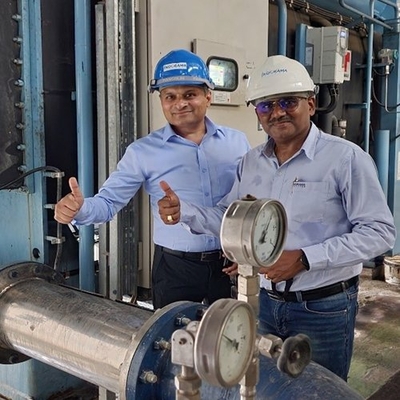
TPT Petrochemicals Public Company Limited (TPT–PET) in Thailand successfully achieved zero liquid discharge by implementing SCALEBAN equipment. This initiative effectively addresses the rising costs of water and risks associated with droughts. As a result, the water consumption rate has been reduced by 50%, with the rate now at 0.33 m3 of water/ton of product, the lowest amongst all Indorama Ventures-PET sites.
The implementation of this technology not only safeguards the site from water shortages but also eliminates odors, enhancing the reputation of the community. The success of this project supports TPT-PET’s plan to sustainably double production capacity and supports Indorama Ventures’s commitment to being a responsible and sustainable chemical company.
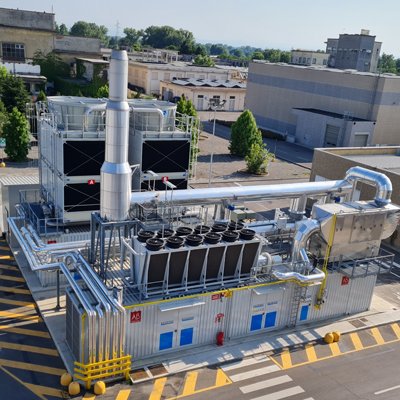
In an effort to reduce the total energy cost, a 3.2 MWe Cogenerator was installed in 2021 at Glanzstoff Sicrem to heat the plant buildings during the winter season and partially heat the diathermal oil and water for increased efficiency of production.
This project achieved a reduction in water consumption of 401,650 m3, contributing to a roughly 20% overall operational cost savings for the plant.
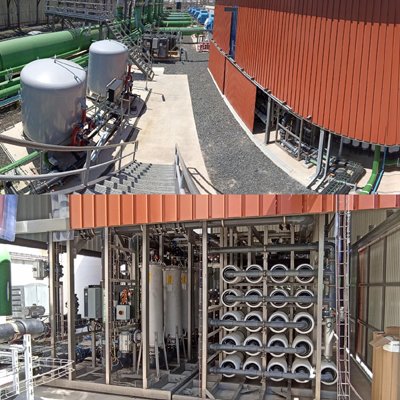
Indorama Ventures Portugal explored various ways to optimize raw water and chemical utilization while recycling plant effluents (saline and wastewater). The plant’s reverse osmosis technology was chosen, with the primary goal of recovering the cooling tower blowdown and re-routing to demineralize the water lines feed tank, reducing the use of strong acid and alkali for membrane regeneration.
This initiative is anticipated to result in an annual raw water consumption reduction of 740,000 m3 (about 12% of overall plant usage). Similarly, this would result in a 15% reduction in caustic soda usage and 47% reduction in hydrochloric acid consumption.
For efficient and effective management of wastewater, Avgol (Russia), a subsidiary of the Company, installed a wastewater evaporator to reduce the volume of wastewater discharged thus lowering the load of wastewater treated after discharge, and in turn, reducing the treatment cost. The evaporator handles hydrophilic surfactant – which makes up just over 5% of Avgol’s waste, almost all of which is uncontaminated or unpolluted. The estimated annual cost-savings amounts to USD 13,000. The wastewater evaporator began operations last year saving 480 L/day, and was designed to process liquids originating from various industrial processes. The use of a vacuum system in the installation allows the boiling process to be achieved for liquids at a temperature significantly lower than in normal atmospheric pressure conditions (boiling begins when the liquid reaches 30˚C). This can reduce the energy needed for a high boiling point condition and decrease the amount of water consumption as evaporated water can return to the process
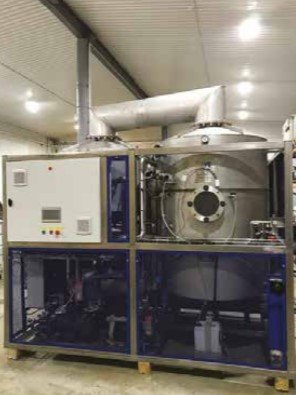
A new wastewater treatment system (Ultrafiltration Membrane System) was successfully commissioned in June 2023 with good collaboration between our internal capability’s engineers and the suppliers.
This project enables the Green/Hill site to further reduce its water consumption by around 100 tons per day, which is equivalent to about 30% of the total water usage and may possibly support Indorama Venturer’s target of reducing water intensity by 10% by 2025.
To date, the team has reached the target of zero discharge of wastewater for both the Changsha site and the Green/Hill site. It marks a significant milestone on Fibers’ continuous improvement journey in terms of sustainability and cost structure.
With 100% of wastewater being recovered at IVPSA’s plant in Ipojuca, Brazil, three projects were implemented to reduce both raw and potable water consumption onsite. Two raw water projects aimed at recovering part of the Water Cooling Tower purge while taking advantage of rainwater during the winter season. The first project treats the Cooling Tower purge in a coagulation/sedimentation system, followed by a reverse osmosis machine which removes antimony and phosphorus salts. This allows the water to be reused in the tower reducing raw water consumption by 26,000 m3/year. The second project, which runs until 2020, transfers and reuses rainwater from the PET resin warehouse to the contention basin and is expected to reduce consumption by 20,000 m3/year (saving USD 5,000 per year). The potable water project consists of a comprehensive set of actions, including individualizing water measurements to the different buildings, replacing potable water with raw water in drainages, as well as for gardening and lavatories, in addition to training programs. This project is already underway providing a reduction of 28,500 m3/year and saving USD 100,000 per year.
Indorama Ventures Dhunseri Petrochem Industries Private Limited, an Indorama Ventures subsidiary located in Panipat, India, established a rainwater harvesting system at its plant in 2017 to supply surface water to subsurface aquifers (before it is lost as surface runoff). The amount of rainwater estimated to percolate into the ground is over 41,500 m3/year, which amounts to over 30% of 2017 annual fresh water withdrawn by the plant. This water will be free of pollutants as well as salts, minerals and other man-made contaminants, and will help in reducing soil erosion and contamination of surface water with pesticides and fertilizers by replenishing groundwater. We have plans to extend this system to additional sites in the future.
Innovation technology of a sanitization process with lower water in Brazil, some products are micro-susceptible and need a process of the bulk road transport sanitization to guarantee all the specifications of the product to the client. During 2021, we developed a new technology that avoids using 90% of water to sanitize those vehicles and, in 2022, about 30% of the road transport operations were carried by bulk vehicles that were sanitized by this new technology. More than 1,222 tons of water were saved in this project, and more sanitizers are being homologated in 2023 to increase this technology to more clients.